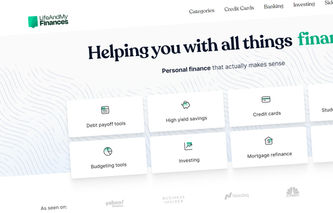How do you pay off multiple credit cards? What’s the best way to pay off credit card debt? Should you pay off your credit card in full or leave a small balance? And which is the best credit card to pay off first?
We’ve heard it all.
Those questions—like the debt itself—seem never-ending.
The good news?
Today, you’ll actually find out the best way to pay off multiple credit cards.
What is it? Read on—
This article will show you:
The best ways to pay off multiple credit cards.
How credit card debt works.
Which credit card to pay off first.
Read more:
So, you have credit card debt. Don’t worry—so do 77% of American households.
Below we compiled everything you need to know about paying it off.
Muster all your motivation, and let’s begin—
How Does Credit Card Debt Work?
Credit card debt works as a type of a revolving balance, where you borrow up to a pre-set credit limit provided by the bank or credit card company.
Each month, you get a statement with a minimum payment that helps you avoid late fees (but it won’t significantly reduce your debt).
If you don’t pay the full balance by the due date, interest is charged on the remaining amount—which causes your debt total to grow.
But, if you don’t pay your bills at all, your debt total goes up quickly and your credit score goes down (not the situation you want to be in).
Your credit card debt also impacts your credit score. Maintaining a low balance relative to your credit limit and making timely payments helps keep your score healthy.
How to Pay Off Multiple Credit Cards
Wondering how to approach paying off multiple credit cards?
It may seem like a lot, but all it really takes is a bit of organization and determination.
Here’s our full list of the best ways to pay off numerous credit cards—
1. Create a to-debt list
List out all your credit card debts, including the outstanding balances, interest rates, minimum payments, and due dates.
This will give you an organized view of your debts.
2. Choose a payoff strategy
It’ll also help you answer the question: Which credit card to pay off first?
You have two popular choices: the Debt Snowball method (paying off the smallest balances first) and the Debt Avalanche method (paying off the highest interest rates first).
Debt Snowball method
The debt snowball method is all about knocking out your credit card debts from the smallest to the largest balance.
Is it better to pay off small credit card balances first? We think so.
The method is really easy to follow and keeps you motivated as you see debts disappearing one by one.
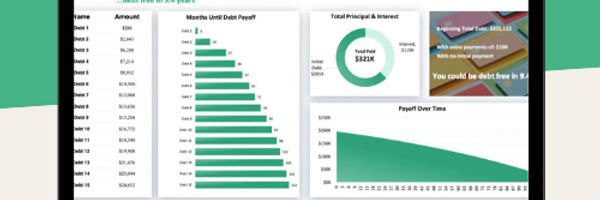
Lay out your credit card debt with the minimum payments and interest to see how long it will take to pay off!
What you will get:
Interactive dashboard
Customizable to your needs
Stay on track with charts and graphs
Suitable for up to 16 or 32 debts!

Want to see how it works in real life? Take a dive into these resources for practical examples to keep you plowing through your debt:
Or check out how the founder of Life and My Finances, Derek Sall, does it himself:
All you need to do is this:
List out all your debts from the smallest to the largest balance, regardless of the interest rates. Include the minimum payments and due dates for each debt.
Make the minimum payments on all your debts to avoid late fees and protect your credit score.
Put any extra money you can find in your budget towards paying off the smallest debt while still making minimum payments on the others.
Once you’ve paid off the smallest debt, treat yourself to a small reward and savor the accomplishment. This will keep your drive throughout the process.
Now move on to the next smallest debt. Take the amount you were paying towards the first debt (including the extra payments) and add that to the minimum payment for the second debt on your list. This creates a “snowball” effect as you progressively put more money towards each next debt.
Rinse and repeat until you can call yourself debt-free.
For an extra jolt of inspiration, have a look at our article on how being debt-free can change your life.
The Debt Avalanche method
The Debt Avalanche method is often seen as the best way to pay off high-interest credit cards and multiple overdue credit cards efficiently.
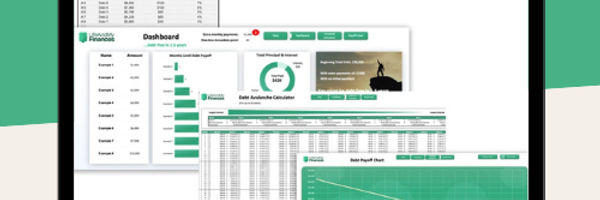
Want to get out of debt this year? This avalanche debt payoff spreadsheet is what you need!
A few top features of this template:
Fully customizable and easy to “play around” with
This tool is awesome for motivation!
Room for up to 32 debts!

Here’s how to apply it:
Begin by listing all your credit card debts, including balances, interest rates, minimum payments, and due dates. Rank the debts from the highest to the lowest interest rate.
Make minimum payments on all your credit cards to prevent late fees and damage to your credit score.
Target the highest-interest debt by putting any extra money from your budget towards paying off the credit card with the highest interest rate while maintaining minimum payments on the other cards.
Stay focused and disciplined. Paying off high-interest credit cards can take time, so maintaining discipline and a long-term mindset is crucial when using the Debt Avalanche method.
Move on to the next debt and repeat the process. Once you’ve cleared the highest-interest credit card debt, shift your focus to the card with the next highest interest rate. Apply the amount you were paying towards the first card, including the extra payments, to the new targeted card.
Track your progress. Monitor your success in paying off the debts and celebrate milestones to stay motivated—accountability is key when using the Debt Avalanche method.
Is it better to pay off multiple overdue credit cards efficiently or use the debt snowball method to keep up the momentum?
Think about what motivates you more and go with that.
(Sidebar: Want to get out of debt in a year or less? Check out our new Get Out of Debt course.)

3. Create a budget
Create a solid budget to manage your finances and put money towards credit card payments.
Track your expenses to find areas where you can save to get extra money for debt repayment.
Use our free tools to help you:
4. Prioritize payments
Always make minimum payments on all your cards to avoid late fees and credit score damage.
Focus on paying off one card at a time using the chosen strategy (either snowball or avalanche) while making the minimum payments.
Put any extra money towards the card you’re currently prioritizing.
5. Negotiate with your credit card companies
“Don’t take no for an answer.” Adopt this attitude when talking to your credit card company.
Explaining why paying your debt off is both important and hard for you right now may be uncomfortable—but it’s necessary.
Sometimes doing that can bring a significant change in your rates.
Plus, you’ll soon become a negotiation ninja if you have debt on a few credit cards. Keep at it.
6. Make more money
With no money, you won’t be able to pay anything off.
That’s why you need to buckle up and rake in more dough:
Ask for a raise. (That negotiation muscle will come in handy here.)
Start a side hustle. (See our best side gig ideas here.)
Sell unwanted items. (Inspire yourself by watching a video about selling clutter online.)
Rent out your parking space if you have one.
Rent out any other unused space using Neighbour.
Rent out baby supplies, toys, high chairs, and so on, for Airbnbs in your area. (We recommend using BabyQuip for that.)
7. Cut costs wherever possible
How to pay off multiple credit cards fast?
First, you need to stop spending and stop using the credit cards.
Take a good look at your spending habits, cut back on non-essential expenses, and explore ways to save money.
If you want help negotiating with your providers, use BillCutterz.
8. No more debt
Again, keep your credit card usage in check during the repayment process.
Don’t add any new charges unless absolutely necessary.
9. Use up all your windfalls
Any spare change or a dollar found on the street should go directly to your payoff pocket.
Every penny counts.
10. Set autopay
A typical late fee on any given credit card is about $40. That’s like flushing your money down the toilet.
While paying off multiple credit cards, you can’t let that happen.
Set automatic payments and forget about the whole thing.
11. Work on your mindset
The right mindset can make or break your efforts, especially if you have big amounts of debt.
Learn as much as possible about how to get rid of your debt (a shameless plug—check out our new course “How to Get Out of Debt Fast”).It also helps to read, watch, or listen to stories of folks who are a few steps ahead of you or have accomplished the goal.
12. Get accountable
Do you have that one annoying friend that never lets you forget about what you told them?
Use them to your advantage and let them in on your debt payoff strategy.
They will help you for free—all the while enjoying the process.
13. Have weekly debt meetings
Regularly track your debt repayment progress and celebrate small milestones.
Staying motivated is key to successfully paying off multiple credit cards.
14. Consider debt consolidation
Debt consolidation is a handy strategy that helps you bring all your debts together under one roof.
It’s like hosting a party for all your debts so you can deal with them more easily.
When you consolidate your debts, you turn multiple payments and deadlines into just one, making your life way simpler.
Here’s how it works:
Pick your consolidation method. The most popular ones include a personal loan (the fancy guest of the party), a balance transfer credit card (the low-key friend), or a debt management plan (that responsible buddy who keeps everyone in check).
Shop around and compare offers to find an option that suits you. Look for a lower interest rate than what you’re currently paying on your debts. (A good credit score will give you access to better deals—we recommend a Capital One Savor card if you have one).
Once your loan is approved or your balance transfer card is in hand, gather all your outstanding debts and move them over to the new account.
Now that you’ve got all your debts in one place, create a solid repayment plan (work out how much you need to pay each month to clear your debt within the loan term or balance transfer promotional period).
Be careful not to fall into the same spending habits that got you into debt in the first place. Stick to your budget and be mindful of your expenses.
Monitor your progress as you pay off your consolidated debt. Celebrate milestones along the way, but always stay focused on the end goal: being debt-free.
By consolidating your debts, you make managing your financial life a whole lot easier, and you can save on interest too.
All it takes is to stay disciplined and committed to your repayment plan.
Last but not least—read the fine print very carefully.
Read more:
15. Talk to a credit counseling company
If all else fails, look into getting professional help.
If you feel overwhelmed or unsure about handling your debts, consult a credit counselor or financial advisor for expert guidance and support.
How Long Will It Take to Pay Off Multiple Credit Cards?
It’ll be up to you.
How determined are you to pay it off?
To use an example—
Anna has almost $20,000 of debt on three credit cards.
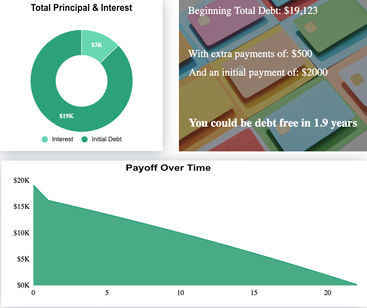
She opted for the debt snowball method and, using our free credit card payoff calculator, figured out that by making only the minimum payments, getting debt-free is going to take her more than seven years.
As you can imagine, Anna wasn’t thrilled at the idea, and decided to find another way.
Let’s see how soon she’ll get rid of her credit card debt if she pays a lump sum of $2,000 now—and adds $200 to the minimum payment.

This way, Anna would pay her cards off in less than two years.
The Best Tools to Manage Credit Card Debt
If you want more insight into how to deal with credit card debt, use the free tools available online:
Key Takeaways
Choose between the debt snowball method and the debt avalanche method.
Stop using your credit cards.
Save and make more money.
Put every spare cent toward paying off debt.
FAQ
How can you pay off credit card debt in one year?
How can you pay off large credit card debt?
How can you pay off credit cards using multiple monthly payments?
How can you pay off multiple high-balance credit cards?
How can you pay off credit card debt without a loan?
What's the best way to pay off credit cards to improve your credit score?
Should I pay off my credit card in full or leave a small balance?
Is it better to pay off one credit card or reduce the balances of two?
How do people get into credit card debt?
Should I pay off open or closed accounts first?
How do I pay the principal on credit cards?
Sources
Experian. (n.d.). Should You Close Paid Off Credit Cards. Check Your Free Credit Report & FICO® Score - Experian. Retrieved May 31, 2023, from https://www.experian.com/blogs/ask-experian/deciding-whether-to-close-paid-off-accounts/










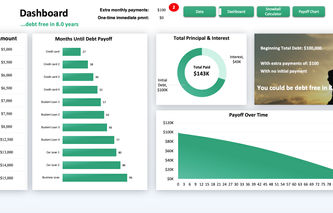
.jpg)
